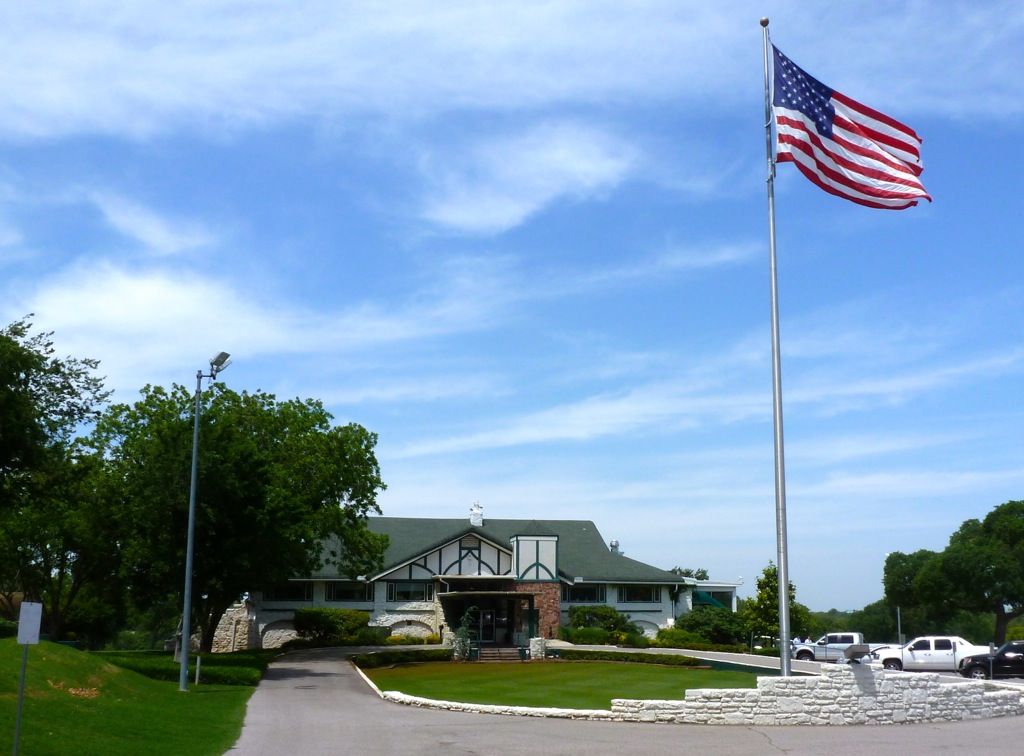
Twin Hills is routed over as wild terrain as I've ever seen on a golden era design. Two men who are quite familiar with Maxwell's work believe Twin Hills to be Maxwell's very best routing; I, honestly, don't agree with that assessment. I am certainly impressed that he was able to place a golf course on terrain this undulating, but I don't know that makes it a great routing.

What is difficult [impossible] to see from the routing (trees now block their view) is that the entire golf course is routed around two low spots / streams that run through the golf course. Holes 5-9 are routed around a stream that runs between 6 and 8 and then crosses in front of 7 and 4 (amazing that he can get so much 'use' out of a small feature). Holes 1 and then 13-18 are all routed around a low point / stream that runs parallel to the par-3 14th.
Now, keep in mind the low spots and look at the routing of the holes. Imagine how the each fairway would tilt toward that low area. The routing guarantees that consecutive holes will always tilt in different directions and each shot from the fairway will play from a different lay.
OK, so maybe it's a pretty good routing.
My big issue is that Maxwell did not effectively have the streams impact play. Now, this may just be the result of many years of tree growth and terrible mowing lines, but as the course sits today I see it as a missed opportunity.
As is a Maxwell trademark, the golf course returns often to the clubhouse, 5 times at Twin Hills.
Holes to Note I believe that Maxwell must have found his par-3 green sites before any others. As is the case at several of his other courses, the par-3s have the most natural and most dramatic green sites on the golf course.
Take, for example, the long 230 yard 7th. The green sits perched in a small valley. The tee shot requires a short carry over a stream which then winds its way next to the 7th green. Reminiscent of the 11th at Old Town, a very pretty and difficult golf hole.
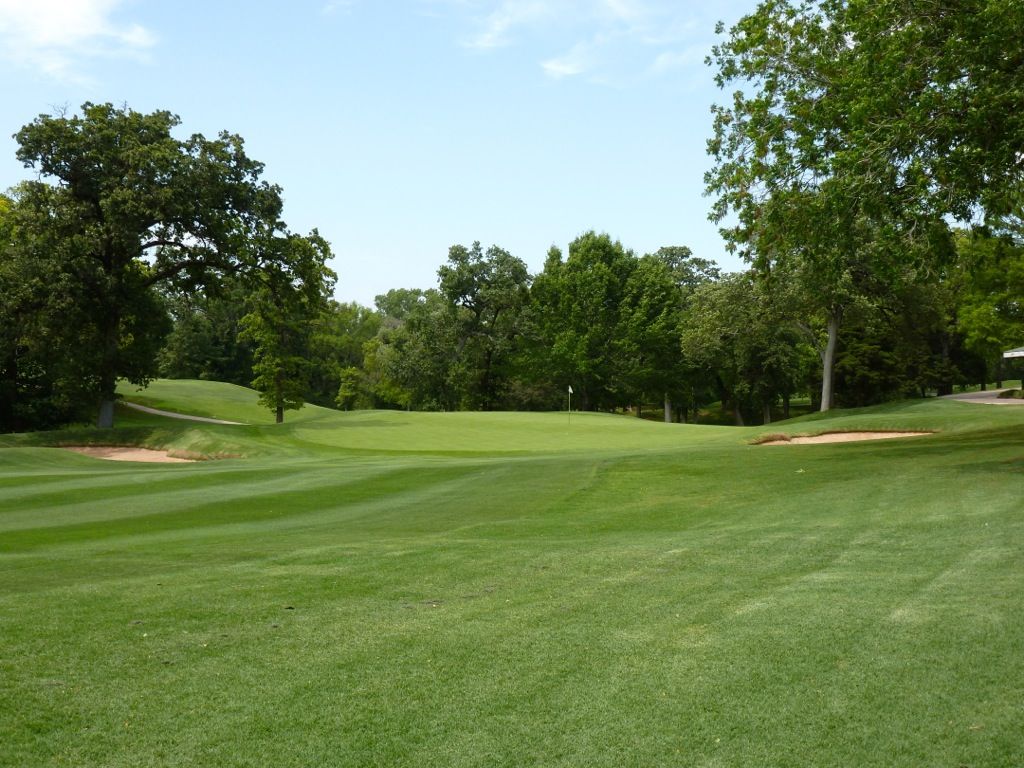
Similarly, the difficult 11th has its green sit naturally atop a valley. One of the most dramatic green sites on the golf course (and easily the most difficult green on the golf course -- one of the potato chip variety):
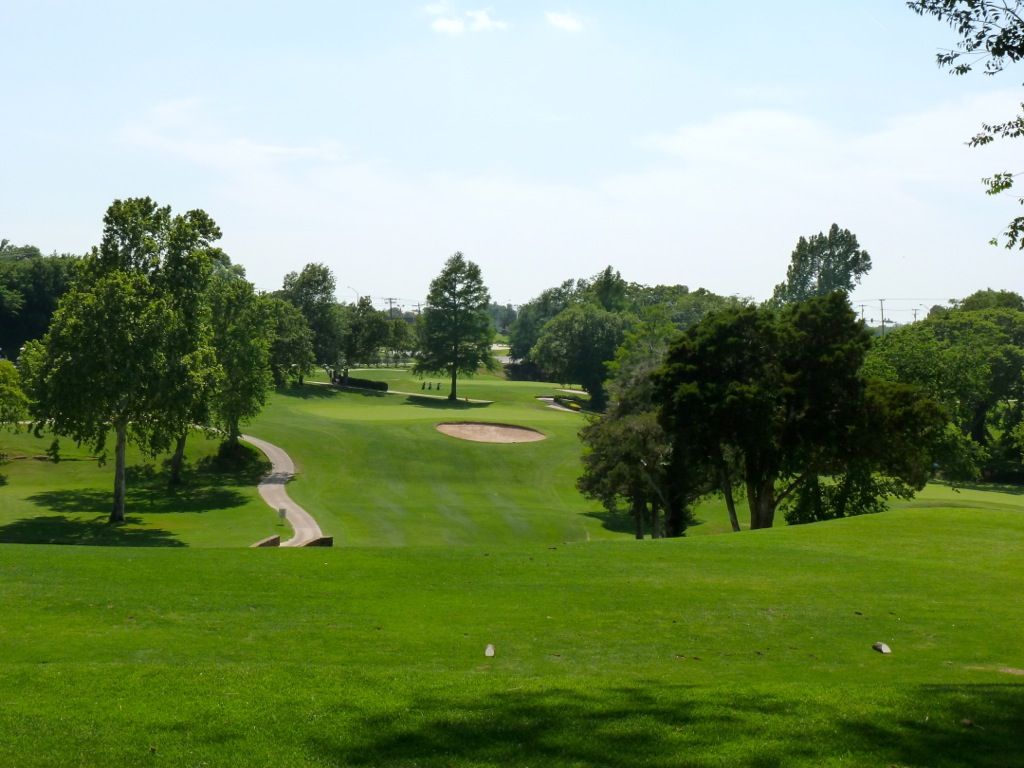
Lastly, the 180 yard 14th is located in another idyllic setting. Once again sitting atop a small flat area above a steep drop-off to a stream on the left.
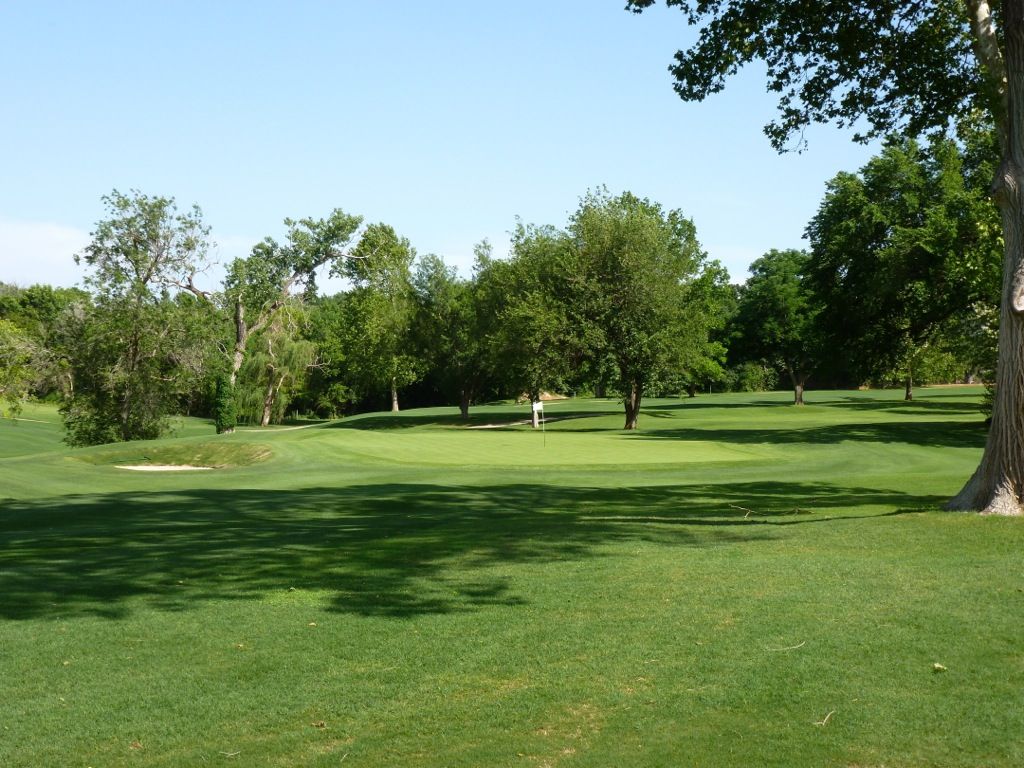
As I mentioned, there is some seriously wild terrain at Twin Hills. This led to both dramatic changes in elevation (in a few instances) and extremely tilted fairways (almost always).
The sharply doglegged par-4 1st is a good example of both. I suspect at one time the fairway lay much closer to the drop-off to the right -- what an amazing hole that would have been.

The par-5 5th has as much elevation change / fairway movement as anyone could ever want... if only we can get rid of those trees!
One of very few reverse-cambre holes I saw from Maxwell, he begs you to challenge the OB on the right to avoid the bunkering on the left (easy to find because of fairway tilt) and leave a preferred angle for your second shot.
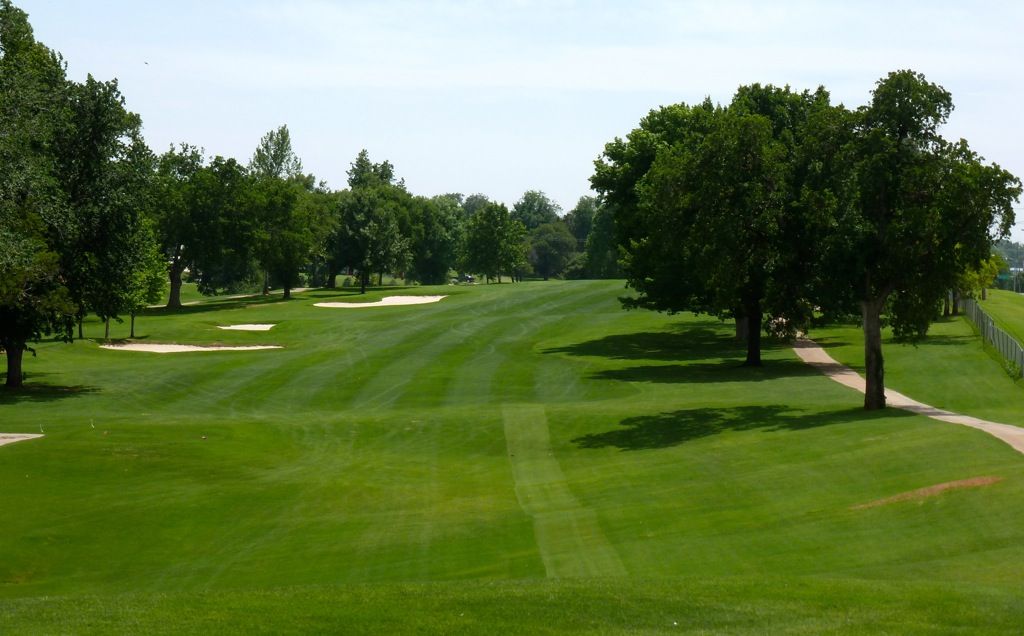
Once in the fairway (or not) the golfer is faced with a completely blind second.. have I mentioned that Maxwell is not afraid of blindness? Not much indication of ideal line.
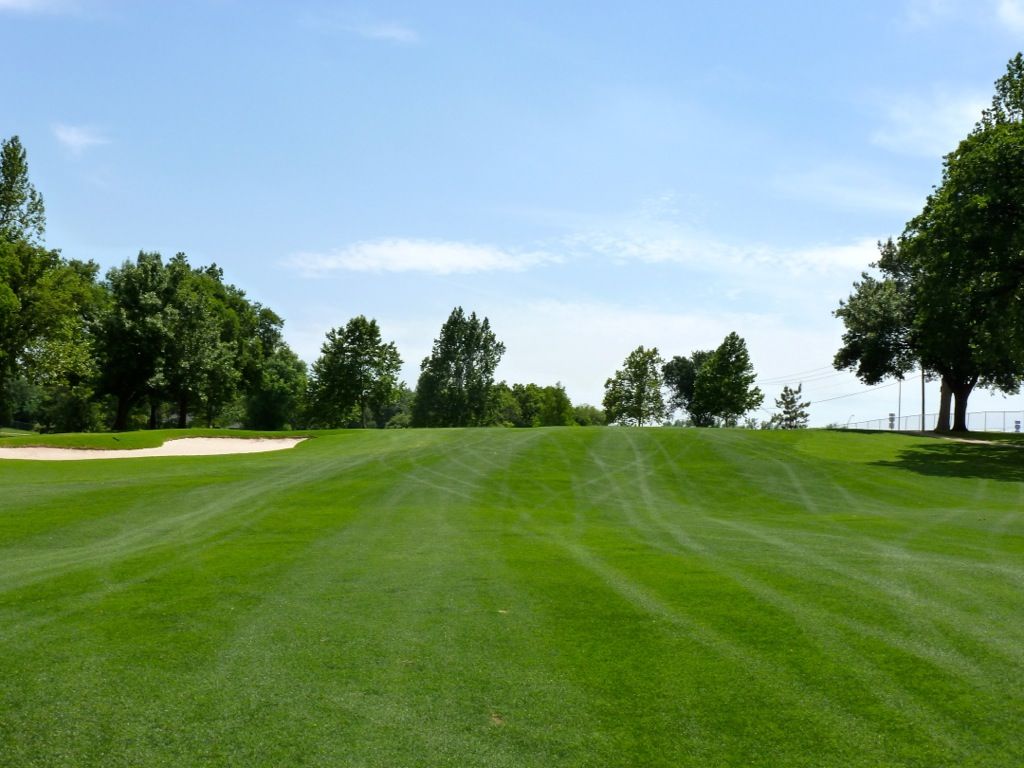
OK, so now we've gone downhill with the tee shot and then uphill with the second so the third must be...
downhill. With the right-to-left contour of the fairway it is difficult getting the lay-up far enough to the right to leave a clear shot into the 5th green:

Also note the scale of the bunkering here... much larger than most of what I saw from Maxwell. This was the first course he was ever hired to build and I suppose he was still deciding on his 'style'
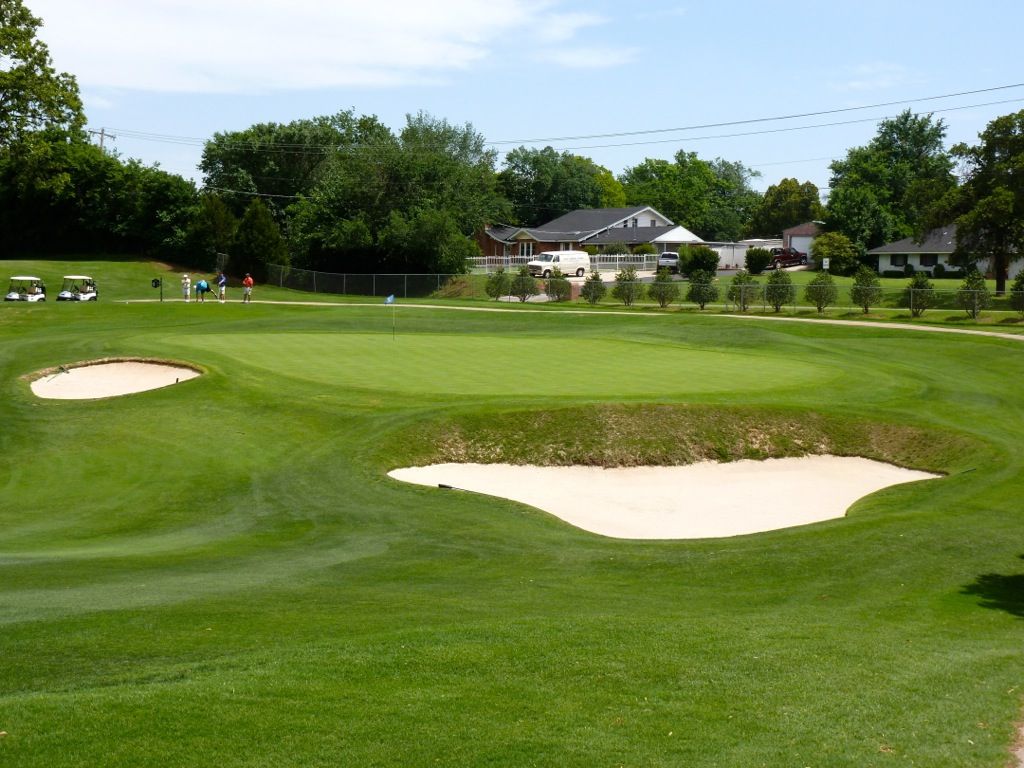
Similarly, a massive bunker guarding the back of the 11th green...
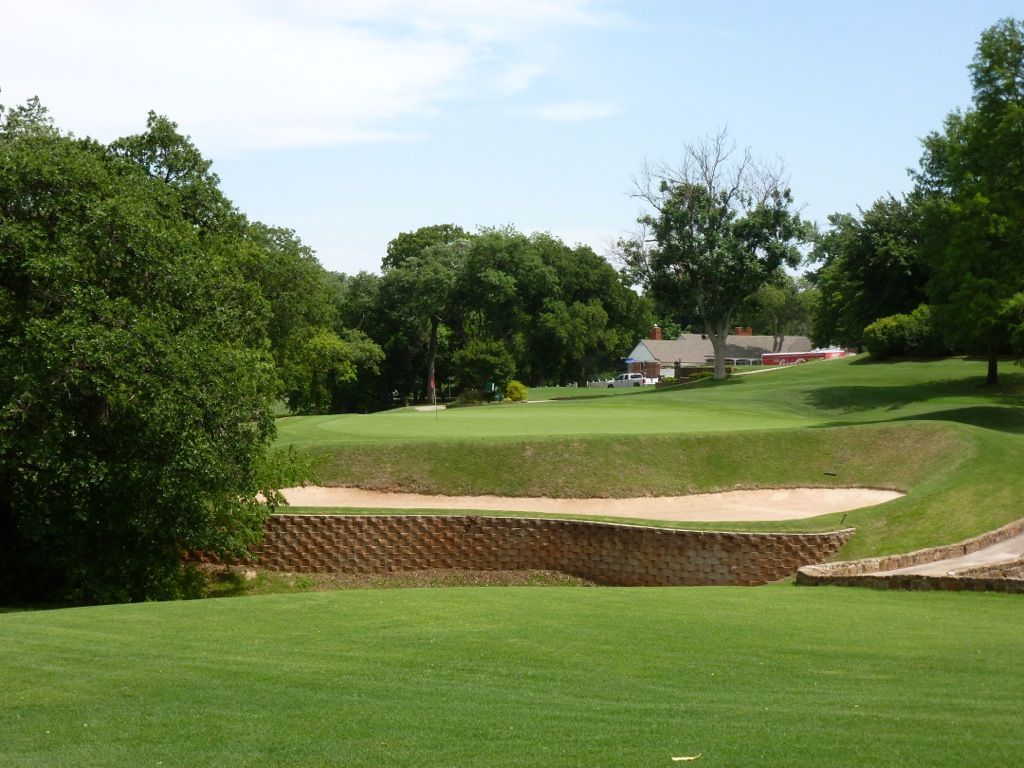
The 6th fairway has as much tilt as I've ever seen...
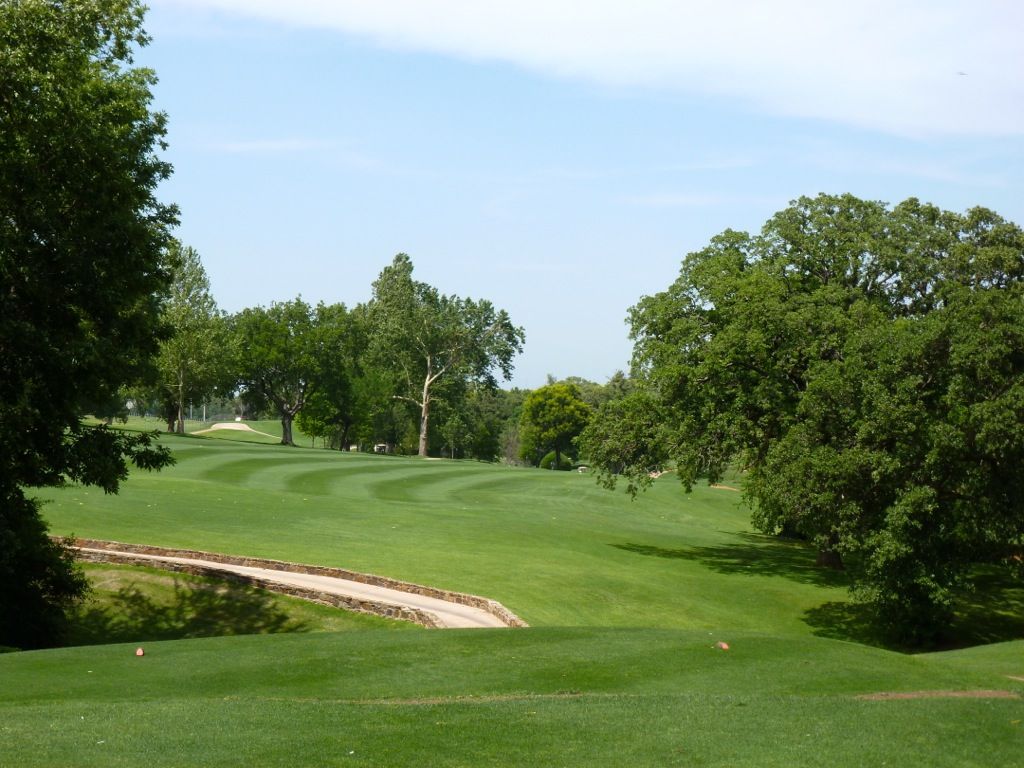
The 9th features another Maxwell trademark... a dogleg hole with the ideal line being from the outside of the dogleg. I love this. A trade-off: shorter approach or preferred angle of approach? Nowhere is this done better than Prairie Dunes' 1st, but this is a good example:
Tee shot begs the golfer to challenge the inside of the dogleg..
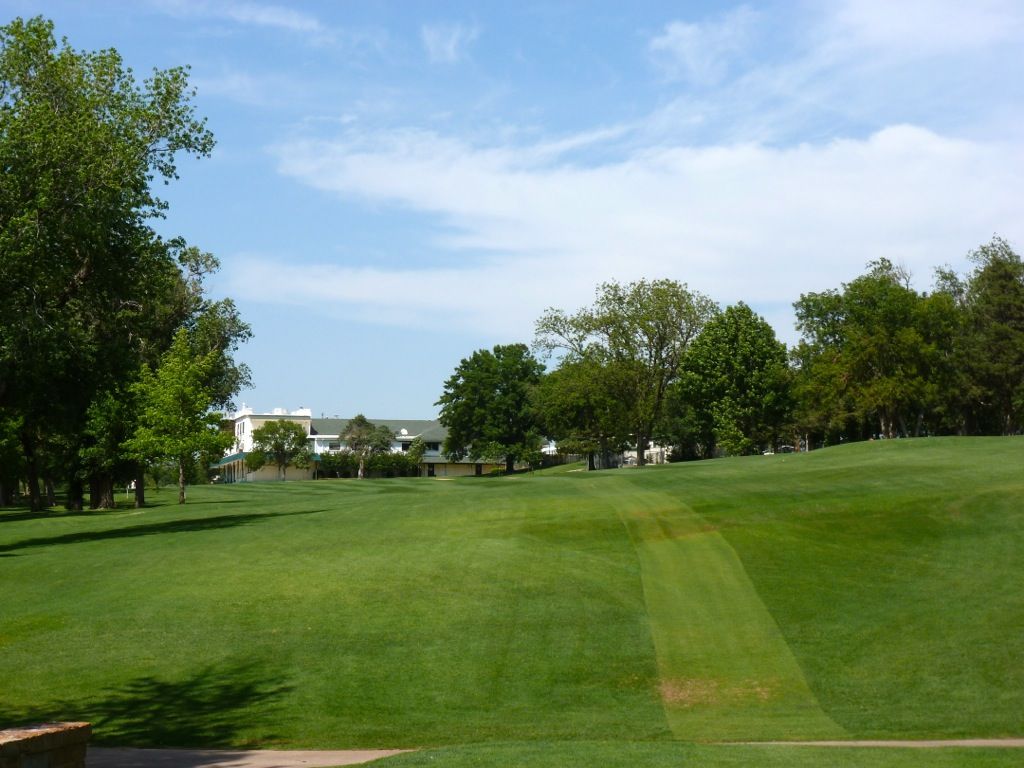
But as is clear from this picture the preferred angle of approach is from the right (outside of dogleg):
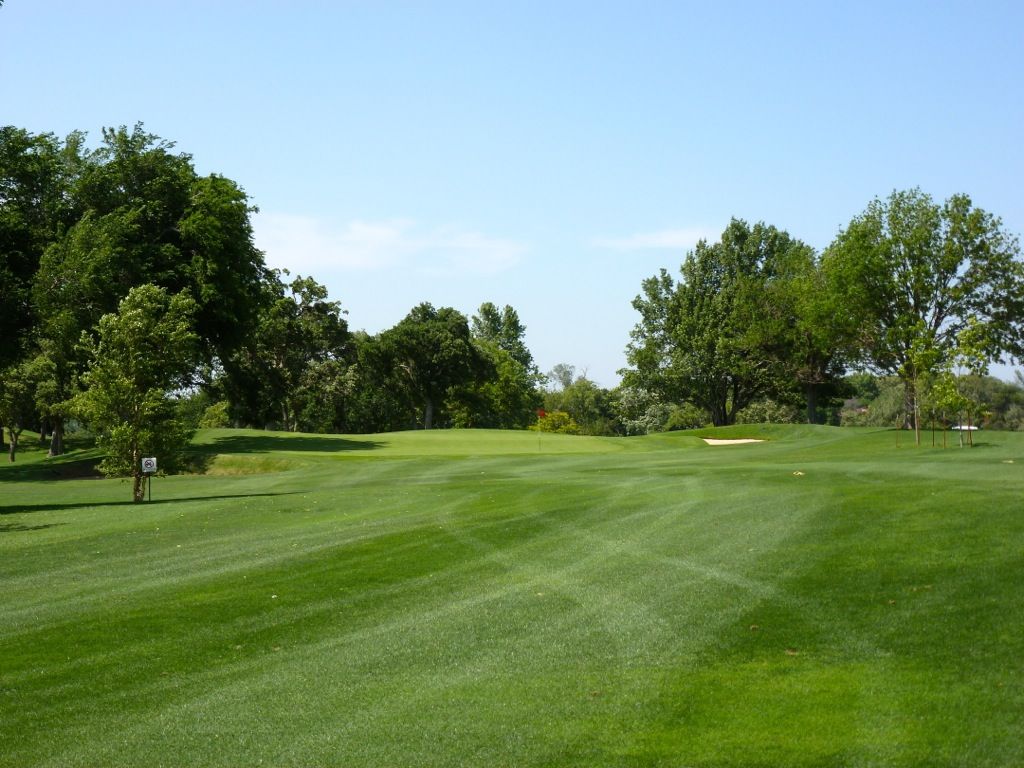
The 10th is a bizarre hole that doglegs 90* and plays only 250 yards on a straight line, but of note is the clever deceptive bunkering short of the green...
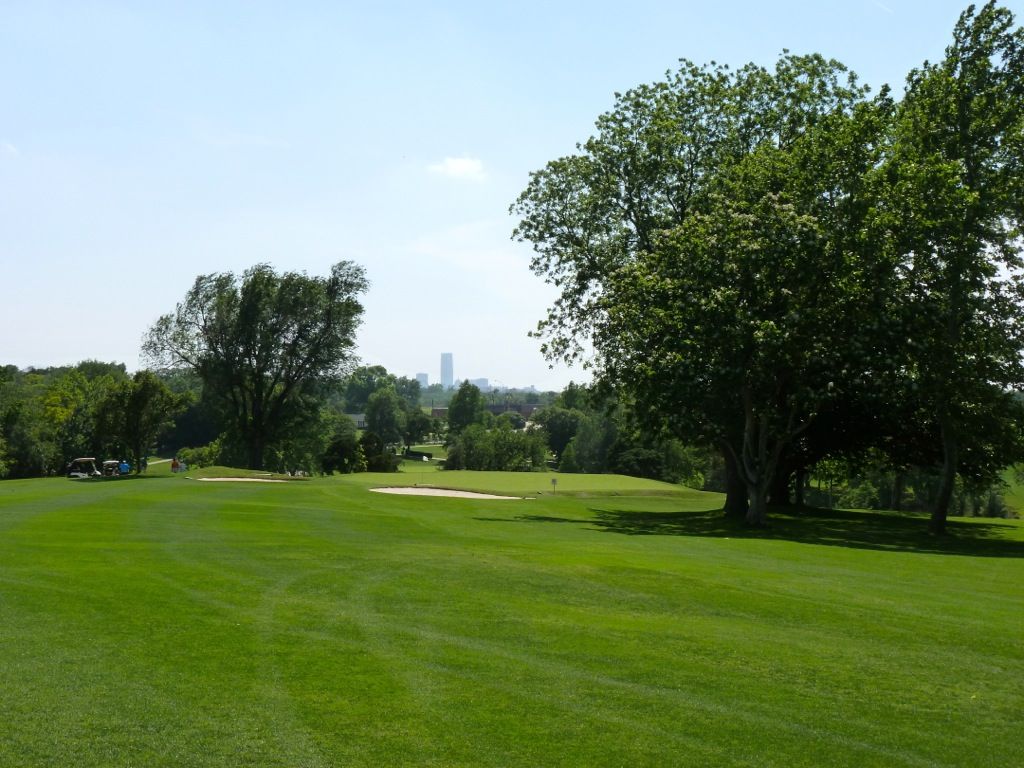
and the very cool feeder slope (remember we saw this also at Oklahoma City on the 2nd and 5th and also at Bristow's 3rd)...
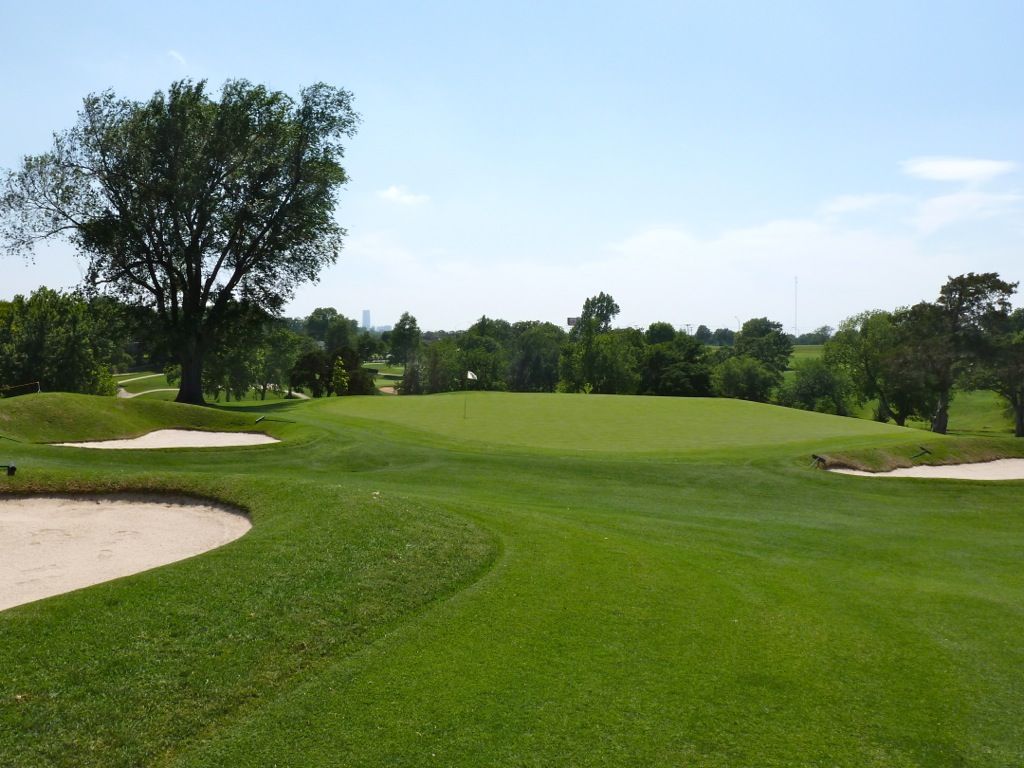
The trademark Maxwell blind tee ball over a raise at the 13th:

And again at the 15th:
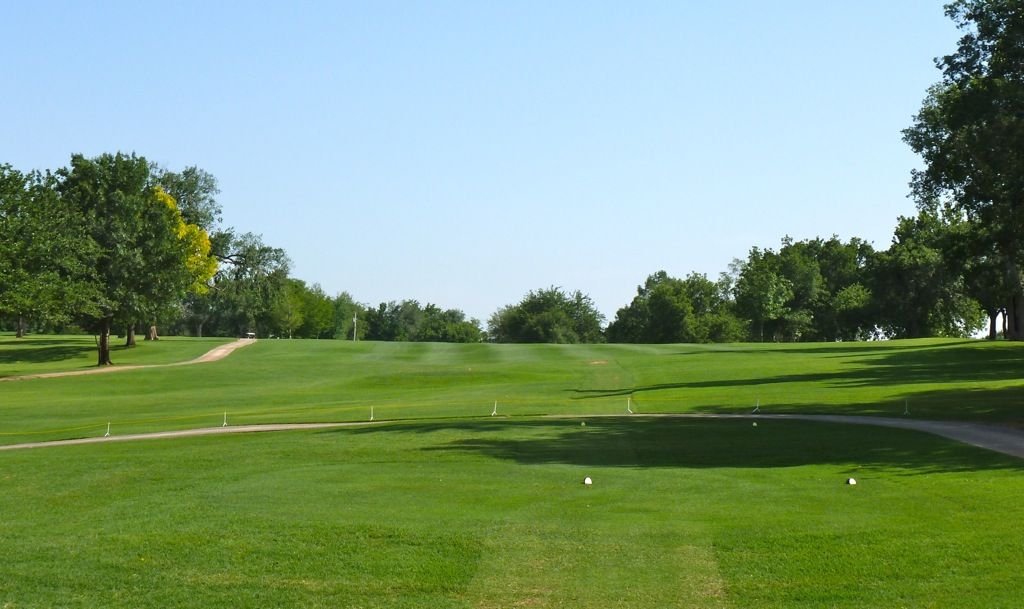
And at the 17th:
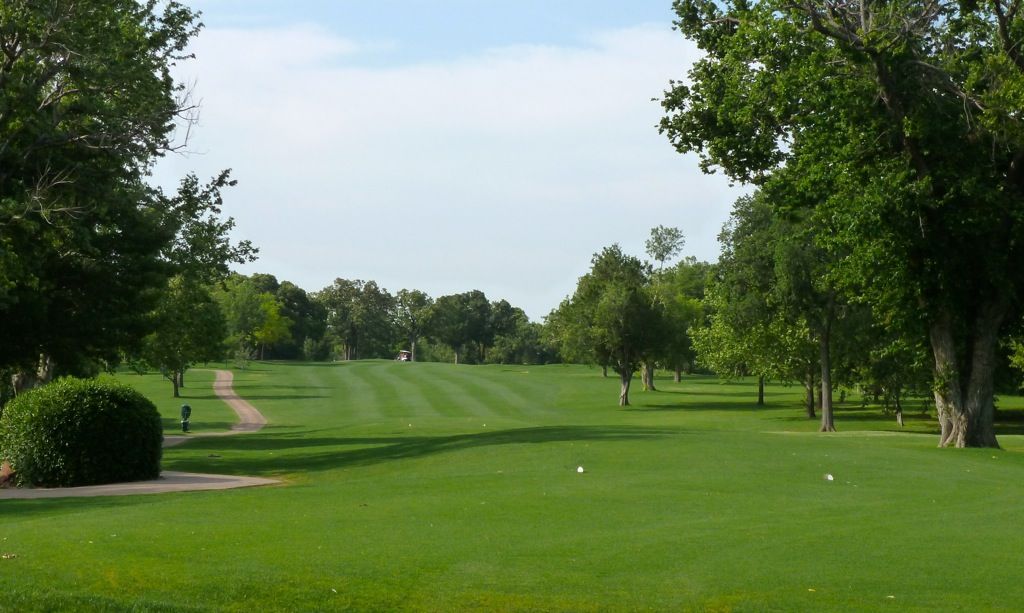
The 18th is an example of perhaps my favourite Maxwell template... with the green clearly in view (it would be if not for those damned trees), the tee ball is played downhill to a fairway that cannot be seen from the tee and the approach played back uphill to the green.
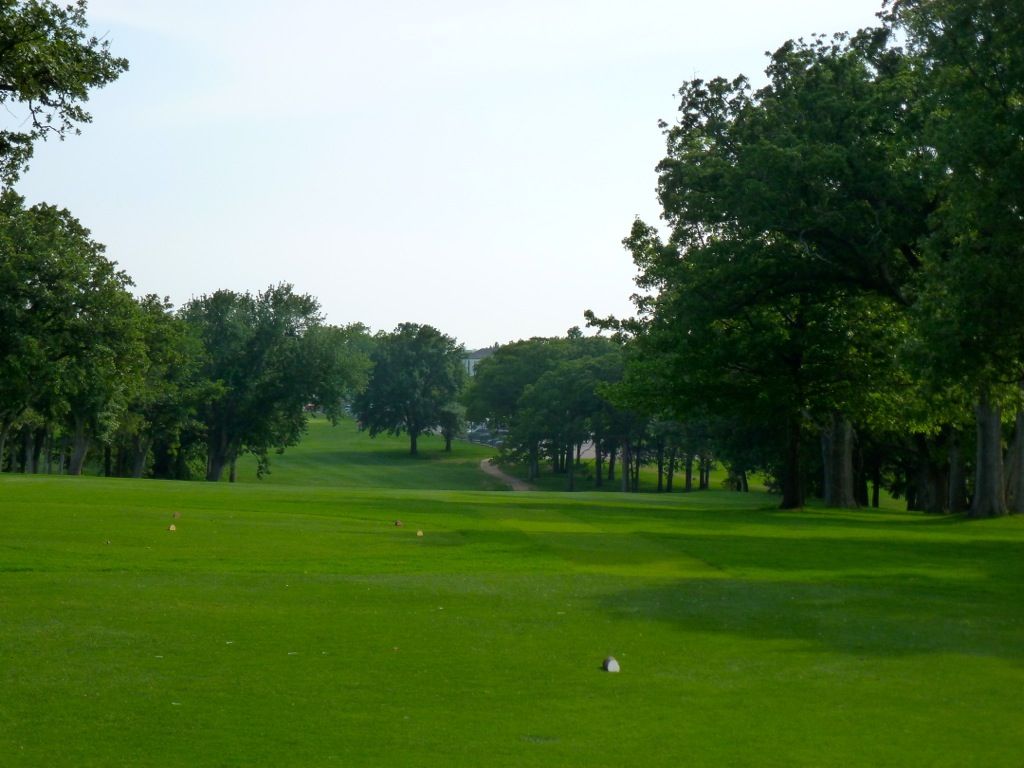
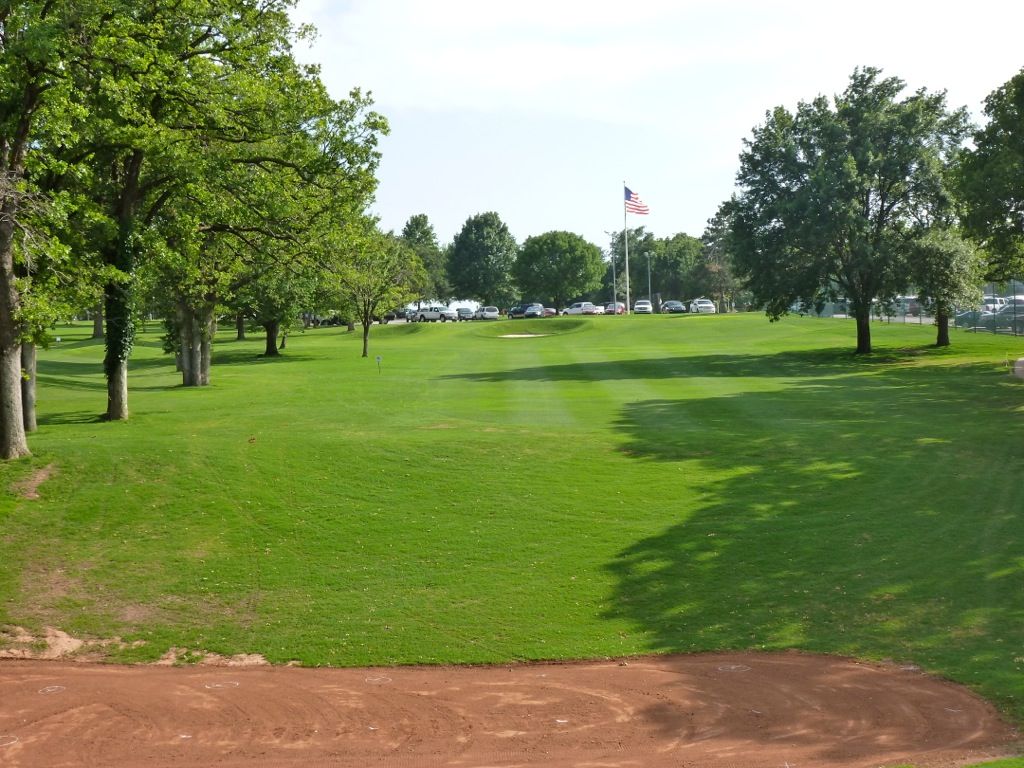
The 16th also should be mentioned as Maxwell embraced some very wild terrain that first moves severely downhill and then banks hard to the left. No need to add hazards or bunkers here, what is on the ground is plenty of golf hole...
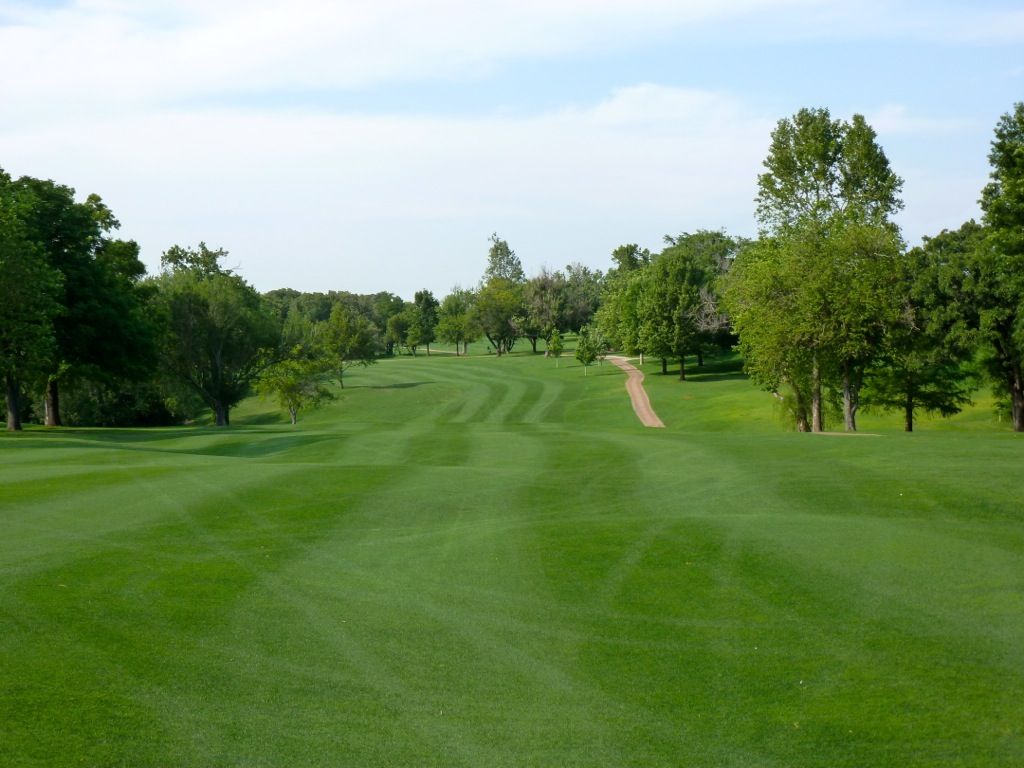
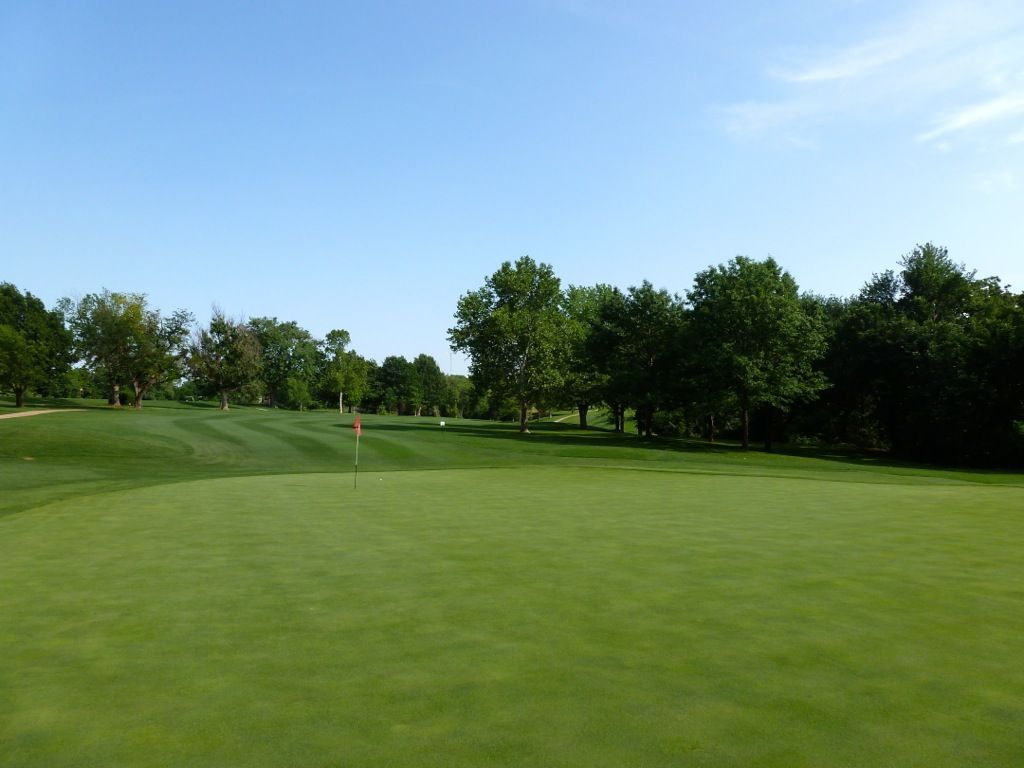
Full photo album available here:
http://s1211.photobucket.com/albums/cc430/SaltyLaw/Twin%20Hills/